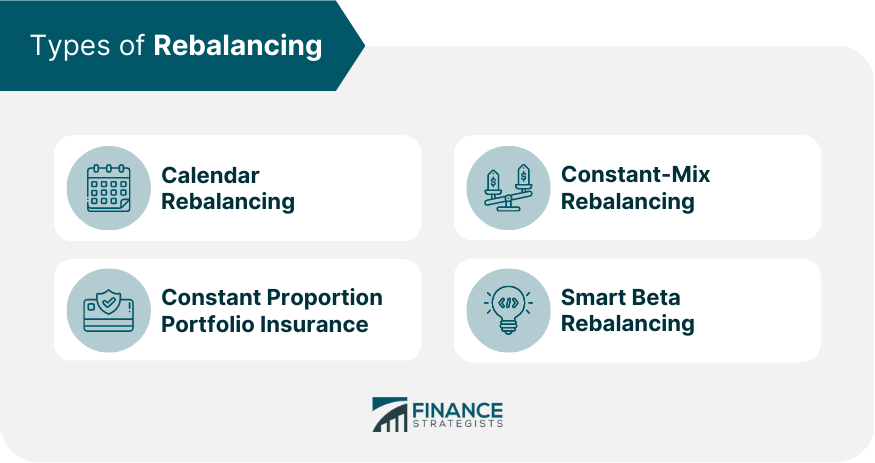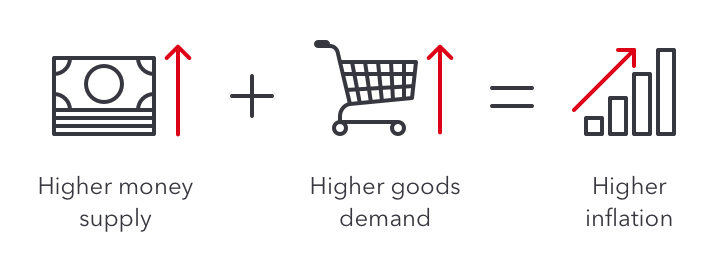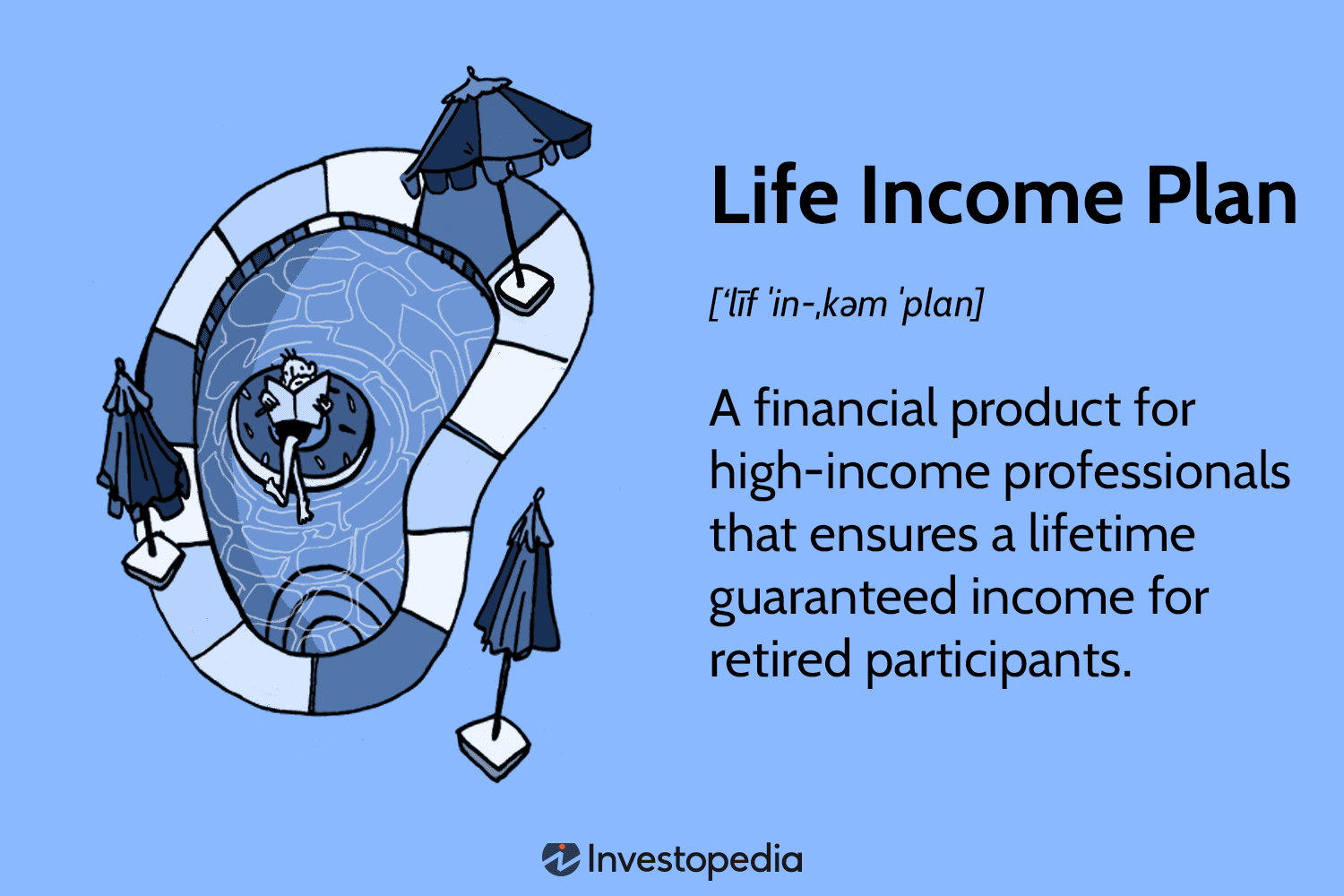Driven vs. Owner-Driven Annuity: Which Is Best For You?. Whether you’re a retiree or an investor, annuities can be one of the best ways to secure your financial future. However, there are two main types of annuity contracts—owner-driven and annuitant-driven—that have different advantages and disadvantages.
In this article, we’ll compare and contrast these two types of annuities in order to help you decide which is best suited for you. We’ll discuss both the similarities and differences between owner-driven and annuitant-driven contracts so that you can unlock the ultimate battle when it comes to choosing an annuity contract.
We’ll look at who benefits from each type and how their long-term performance compares, as well as any risks associated with them. By the end of this piece, you’ll have all the information needed to make an informed decision about which type of annuity contract is right for you!
Annuity-Driven Contracts
Annuitant-driven contracts are a type of financial agreement that is owned by an individual or natural person and designed to provide payments to the same owner, usually in retirement.
The terms of the contract may vary depending on how long the annuitant’s life is expected to be, as well as any potential surviving spouse who may also benefit from the lump sum payouts when measuring life expectancy.
In this arrangement, the death of the annuitant triggers certain actions, such as the termination of payments or the allocation of proceeds to a designated beneficiary instead.
In comparison with an owner-driven contract, where ownership rights can be transferred through different documentation, annuitant-driven contracts remain linked solely to the human being whose name they bear until death occurs.
This means that regardless of what happens between signing and passing away, only one party will have access to its funds, creating more certainty for retirees and their families alike.
Death Of The Annuitant
When discussing owner-driven annuity contracts, it’s important to consider the death of the annuitant. In this scenario, the life expectancy of the annuitant is no longer a factor, and payments will stop once that person passes away.
The annuity can then be passed on to a named beneficiary or new annuitant depending on if it was part of an individual retirement account (IRA) or qualified plan, such as an employer pension. This could also mean that a life insurance policy must be taken out by the owner in order for the contract to remain active should they pass away earlier than expected.
For non-qualified contract owners, there may be tax penalty implications when transferring ownership due to a lack of survivorship benefits or taking distributions before age 59 12 without additional penalties.
Ownership transfers are not always easy, but with proper financial planning and assistance from a financial advisor, these processes can become more streamlined and secure for both parties involved in an owner-driven annuity contract.
With all this considered, it’s clear how carefully one needs to weigh their options while choosing between different types of annuities.
Financial Advisors
Financial advisors can play an important role in helping to determine which type of annuity contract—owner-driven or annuitant-driven—is best for a given situation.
Life insurance contracts, such as variable and non-qualified annuities, are complex products that require careful consideration.
Advisors can help individuals understand the differences between these contracts, how they work together with other investments and financial planning strategies, and what impact each option may have on their overall retirement plan.
When working with a financial advisor, it’s important to consider factors such as taxes, legal implications related to irrevocable trusts, ownership rights after the death of the first joint owner, beneficiary designations, annuity surrender fees and charges, if applicable, and any restrictions associated with particular types of annuity contracts.
With this information in hand, clients will e better equipped to make informed decisions about their annuity products.
Understanding all options available when selecting an appropriate contract helps ensure peace of mind during the retirement years.

Owner-Driven Contract
It is a classic battle that has been waging for generations: the fight between owner-driven and annuitant-driven contracts. The two sides have long argued over which is superior, with each having its own unique set of benefits and drawbacks.
To better understand these rival philosophies, it may be helpful to think of them as two knights in shining armor, prepared for battle on either side of an enormous chasm. On the left stands the warrior representing owner-driven contracts, armed with their shield of surrender charges and their lance of account value protection, while across from them on the right is the champion fighting for annuitant-driven contracts, brandishing their sword of contract value growth and their helmet of legal entity control.
The knight representing owner-driven contracts fights for those who wish to retain ownership and control over their investments. A life insurance company can provide this type of contract, allowing individuals or entities (such as revocable living trusts) access to tax advantages like income tax deferral or estate planning opportunities such as passing wealth at death without probate costs.
Here are four key points about why they consider owner-driven contracts supreme:
1. Access to annuity options like variable annuities or fixed indexed annuities
2. Greater flexibility when making financial decisions
3. Ability to transfer assets into different types of accounts
4. Potential ability to pass along money at death due to specific clauses in certain contracts
By comparison, the knight representing annuitant-driven contracts champions those looking primarily for income guarantees throughout their retirement years. This type of contract will often offer lower fees than other alternatives, but there could also be restrictions imposed by insurance companies that limit how much someone can contribute annually or what kind of investment strategies they can pursue within the plan itself.
Ultimately, though, owners must weigh both sides carefully before deciding if one reigns supreme in this ultimate annuity battle!
insurance companies
Insurance companies play a big role in annuity contracts. They are responsible for selling life insurance policies and offering annuities as investments to policyholders.
Insurance companies also manage the tax implications associated with annuity strategies, such as joint life annuities that offer guaranteed lifetime income. Annuity rates vary depending on trust ownership, the age of the policyholder, and other factors determined by the insurance company.
When considering an annuity contract, it is important to look into all of these details before investing in order to determine which company will provide the best service and return on investment.
It is also important to be aware of any additional fees or commissions charged by the insurance company when purchasing an annuity contract. Life expectancy should be taken into consideration when selecting an appropriate strategy; different products may have higher returns if you live longer than expected but could result in lower payments if you die earlier than anticipated.
To ensure your money is protected and invested wisely, research each option thoroughly before making a decision about which annuity product or strategy works best for you. Moving forward, understanding how life expectancy affects your investment decisions can help make sure you get maximum benefit from your chosen annuity product.
Life Expectancy
When it comes to annuity investments, insurance companies have a range of options available. Annuitant-driven contracts are one such option that provides the holder with lifetime income and tax-advantaged growth opportunities while also offering flexibility in how their payment amounts can be structured.
On the other hand, owner-driven contracts come with higher risks due to factors like life expectancy and surrender value but may offer greater potential for earnings down the line. Deferred annuities allow owners to delay payments until later in life or until certain conditions are met.
This could provide more security as well as additional add-ons such as death benefits and riders that protect against market fluctuations. With all these considerations in mind, it’s important to factor your chosen payment options into any decision about an annuity investment strategy.
Now, let’s move onto lump-sum distributions, another way you can receive funds from an annuity contract depending on your needs and preferences.

Lump Sum
What is the best way to compare annuity contracts?
With so many different contract features, payout options, and tax consequences available, it can be difficult to determine which type of annuity is right for you. Financial planners often recommend fixed or qualified annuities as a reliable source of retirement income for senior citizens, while structured settlements are recommended as an efficient form of wealth transfer.
The lump sum option is one thing that sets annuities apart from other financial products. Lump sums can provide quick cash payments in exchange for future payment streams resulting from the annuity contract. This option gives owners more control over how their money is used in the present rather than waiting until they reach the age when distributions begin.
There are also potential tax consequences when taking out a lump sum, depending on the type of annuity being purchased. Regardless, this feature provides great flexibility and allows owners to tap into their funds at any time should they need it, something that isn’t always possible with other financial products.
Moving on from this discussion, the death of the owner also plays an important role in determining which type of annuity reigns supreme.
Death Of The Owner
When the owner of an annuity dies, their death can bring about significant changes to the contract and its terms.
The most important consequence is that ownership of the contract passes on to a designated beneficiary or surviving owner; if there are multiple owners, joint ownership takes effect.
This transfer of ownership affects both financial products related to the annuity as well as insurance products associated with it.
The market risk taken on by the new owner transfers along with any contingent beneficiaries named in the policy, such as those who will receive benefits should they outlive the original owner.
Additionally, some annuities offer death benefits, which may be paid out upon the demise of the holder, providing some level of estate tax protection and inheritance planning for heirs.
Ultimately, when passing down an annuity through generations, it’s essential to understand how these effects occur during transition periods so that all parties have sufficient knowledge and understanding before making informed decisions regarding their investments.
With this knowledge in hand, we now turn our focus onto joint ownership considerations and strategies.
Driven vs. Owner-Driven Annuity: Which Is Best For You?
joint ownership
The death of the owner of an annuity contract does not necessarily mean that it is lost. Joint ownership allows for spousal continuation and a smooth transition in the case of death or disability.
Legal advisors can help plan retirement by assessing how to best use guaranteed income from joint ownership as well as making any necessary beneficiary changes when needed.
When considering financial products such as annuities, both parties should be aware of longevity risk and trust beneficiaries who may also benefit financially. This can provide extra security against mortality risks while still providing financial security after retirement.
In addition, owners have the option to transfer funds tax-free into another qualified product if they are no longer able to take advantage of the benefits offered by an annuity contract.
As with all aspects of retirement planning, consulting legal advisors and other professionals specialized in this area will ensure that you make sound decisions regarding your finances. Therefore, joint ownership offers more options than ever before for couples looking to secure their future together.
Financial Products
When it comes to retirement planning, two financial products stand out from the rest: annuity contracts and life insurance contracts. But which one reigns supreme? To uncover this mystery, let’s explore the pros and cons of each product in more detail:
Tax-deferred growth
* Periodic payments for long-term retirement income
* Federal tax benefits on investment options
* An individual retirement account that allows for tax-efficient strategies
These are just a few features associated with an annuity contract—but what about life insurance contracts? Well, they offer their own unique advantages as well, such as access to various types of financial instruments, including single premium policies.
Life insurance also provides flexibility when it comes to accessing funds during retirement years. Furthermore, these policies can be used to create a steady stream of income through periodic withdrawals.
But despite the many differences between annuities and life insurance contracts, there is one thing they have in common: both provide individuals with powerful tools allowing them to take control over their future financial security.
The decision ultimately boils down to personal preference based on individual needs, so no matter which type you choose, make sure you consider all your available options before making a commitment. With careful research and consideration of the facts at hand, you’ll be able to determine which type best suits your goals for retirement income.
Life Insurance Contracts
Life insurance contracts are an integral part of annuity contracts. These types of contracts provide death benefits to the beneficiary in the event of the insured’s death, making them a great way for owners and annuitants alike to protect their retirement assets.
Many companies have years of experience issuing these kinds of contracts, which can be especially useful when it comes to immediate and existing annuities.
These life insurance contracts come with several advantages. For one, they can guarantee that even if the contract holder dies prematurely, their beneficiaries will still receive the total amount due from the contract or its principal protection features. Additionally, customers interested in flexible payment options may find such contracts attractive since some offer guaranteed income streams throughout retirement while providing additional lump-sum payments at certain intervals within set periods.
As a result, life insurance contracts remain popular choices among those looking to secure their retirement assets against unforeseen circumstances. With this knowledge in mind, let’s move on and discuss natural person requirements for annuity products.
Natural Person
When exploring life insurance contracts, one must consider the natural person as the owner or annuitant of the contract. Civil servants are often faced with this decision, and it is important to weigh the financial situation carefully before making any decisions. Depending on the structure of the ownership and annuitantship, there could be unintended consequences for tax purposes for those involved in either role.
Owning a policy guarantees access to the cash value without possible loss from investing and can have many benefits beyond death benefit protection. On the other hand, when transferring ownership of the contract to someone else, such as a spouse or charitable organization, it may require additional paperwork and fees that go along with changing legal title holders.
It’s important to review all details thoroughly when considering this option and consult with trusted financial experts or follow your financial advisor’s recommendation, depending on individual circumstances. Taking all factors into account will help ensure you make sound decisions that align best with both short-term and long-term goals while keeping your own name attached to the contract.
Though each situation varies greatly due to personal preference, weighing out options between an owner-driven and an annuitant-driven contract should not be taken lightly as it has major implications for both parties involved and their respective financial futures. Therefore, taking time to understand these differences is paramount when deciding what route works best for needs today and tomorrow.
Owner Of The Contract
Owners of annuity contracts have the option to choose between an owner-driven and an annuitant-driven contract. Each type of contract has its benefits, depending on a person’s specific situation at the time of purchase. While both offer guaranteed rates for investors, there are differences that should be considered when making a decision.
When it comes to liquidity concerns, owner-driven contracts provide more flexibility than their counterparts because they allow different persons to access funds without having to go through probate court. However, this can also lead to tax issues if not handled properly with legal advice.
Additionally, many people find that annuitant-driven contracts better suit their financial goals due to the date of purchase and other factors related to their investments. Ultimately, each case is unique and requires consideration of these two types of contracts in order to make the best choice based upon one’s individual needs.
As such, seeking out qualified professionals who understand the nuances of each may help ensure that decisions made today will still serve you well into the future.
Choosing how to best manage finances after marriage is something all couples should discuss prior to tying the knot; surviving spouses need guidance when dealing with complicated financial decisions following the death of a partner.
Surviving Spouse
In recent years, complex annuity structures and their potential tax implications have become increasingly important for financial planning in the United States. According to the Internal Revenue Code, owner-driven contracts are more beneficial than annuitant-driven ones when it comes to estate planning.
However, there is one area where an annuitant-driven contract reigns supreme: surviving spouses. When a spouse dies without leaving behind a will or other estate plans, the probate process can be costly and time-consuming for the remaining partner.
In this case, an annuitant-driven contract offers protection by providing income directly to them instead of having to wait on funds from any assets that may need to go through the probate process first. This allows surviving spouses immediate access to necessary funds during an already difficult situation, all while avoiding additional stress from dealing with complicated legal matters.
Ultimately, these types of contracts offer peace of mind, knowing that no matter what happens, they won’t be left without resources. The human being at the center of such decisions should always be given top priority as well.

Human Being
When it comes to annuity contracts, there is a clear battle between owner-driven and annuitant-driven contracts.
On the one hand, an owner-driven contract gives the original holder of the policy full control over how their funds are managed and invested. They can also choose when they want to start receiving payouts from their investments.
On the other hand, an annuitant-driven contract puts more control in the hands of the person who will receive payments from the annuity, allowing them to decide when these payments should start as well as what form they should take.
Both types of contracts have advantages and disadvantages for the parties involved.
For example, with an owner-driven contract, owners may benefit from having more freedom to make decisions regarding their investment portfolio while giving up some level of control over when they begin to receive payments.
Annuitants may be able to get higher rates on premiums than those offered by traditional policies, but they may not have access to certain features or benefits that come with such policies.
Ultimately, each individual must weigh out these pros and cons before deciding which type of contract best meets their needs.
By understanding all aspects associated with both options, individuals can make better financial decisions that will help secure their future retirement goals.
As we move forward into exploring named beneficiaries next, it’s important to remember this context surrounding owner-driven vs. annuitant-driven contracts so we can understand how named beneficiaries fit within this bigger picture.
Named Beneficiary
Humans are incredibly complex. Despite our best efforts and intentions, we often struggle when it comes to making decisions that affect others or our own futures. We understand the importance of planning for the future but sometimes lack clarity on how to do it effectively.
That’s where named beneficiaries come in: they provide an additional layer of protection for your future and can help ensure that whatever you set up today is carried out as planned.
When it comes to annuity contracts, a named beneficiary can be extremely valuable because they offer more control over the contract value down the line. They allow you to decide who will receive any remaining payments after death—a decision that would otherwise fall solely into the hands of the insurer if no beneficiary was designated.
It also offers peace of mind knowing that someone else has taken responsibility for managing this aspect of your finances throughout your life. With careful consideration and understanding, choosing a suitable beneficiary is one key way to protect yourself and your loved ones during difficult times.
Contract Value
When discussing the value of an annuity contract, it is important to consider both owner-driven and annuitant-driven contracts.
Owner-driven contracts are those in which the owner receives payments from the issuing company directly. This type of contract typically provides a variety of features for owners, such as premium bonuses, higher return rates, and death benefits that can be passed on to their heirs.
On the other hand, annuitant-driven contracts are structured so that the annuitant pays premiums to the issuer, who then makes payments back to them over time. These contracts usually offer more flexibility with regards to payment amount and duration but may not include some of the additional features offered by owner-driven contracts.
No matter what type of contract you choose, understanding its value is essential to making sure you get the maximum benefit out of your investment. Both types of contracts have advantages and disadvantages depending on your individual needs and goals; therefore, it’s important to do thorough research prior to making any decisions about which one would work best for you.
With careful consideration and analysis, you’ll be able to make an informed decision that will help ensure that your financial future remains secure. As we move into looking at how these different types affect annuity payments, it is clear that each has unique pros and cons worth considering carefully before investing in either option.
Annuity Payments
It’s no coincidence that annuities have become one of the most popular retirement savings vehicles for investors. Not only are these contracts long-term, low-risk investments, but they also provide a steady stream of income during retirement:
The payments from an annuity contract can vary depending on whether it is owner-driven or annuitant-driven.
Here’s what you need to know when deciding between the two types of annuity payment structures:
1. Owner-driven contracts guarantee regular payouts regardless of how much money is in the account at any given time.
2. Annuitant-driven contracts require periodic deposits into the account and offer more flexibility with payout amount and frequency.
The terms and conditions associated with each type of contract should be carefully considered before making a decision.
Annuity payments provide financial security during retirement by ensuring retirees will receive consistent cash flow over their lifetimes without having to worry about outliving their assets. This makes them attractive options for those looking to maintain their standard of living after leaving the workforce.
Surrender Charges
Surrender charges are a key factor to consider when comparing owner-driven and annuitant-driven contracts.
With owner-driven contracts, surrender charges are paid by the policyholder if they choose to withdraw funds before the end of the contract term. This can be beneficial for those who intend on holding onto their investments long-term, as it discourages premature withdrawals.
For annuitant-driven contracts, however, surrender charges are paid by the insurance company or investment provider when an annuitant wishes to cancel the contract during its term. This allows more flexibility than with traditional policies but can sometimes mean higher fees and less potential growth in returns.
When it comes to choosing between these two types of contracts, understanding surrender charge structures is important for both owners and annuitants alike. Knowing how these costs work helps ensure that any agreement made is fair and reasonable for all parties involved.
Though there may be certain restrictions imposed depending on which type of contract is chosen, having clarity around what each entails will help one make informed decisions about their financial future. Transitioning into measuring life expectancy provides another layer of considerations to take into account when evaluating one’s options surrounding retirement planning.
Measuring Life
Surrender charges are an important aspect of annuity contracts, but when it comes to selecting the right one for you, there is more than money at stake.
The life expectancy of both the owner and annuitant should be taken into account in order to properly evaluate which type of contract reigns supreme: owner-driven or annuitant-driven.
On average, women live five years longer than men in the United States, according to a 2018 survey by the Centers for Disease Control and Prevention (CDC).
This means that if the annuitant is male and the owner is female, it would make sense to set up an annuitant-driven contract since payments will continue after the death of the annuitant over a period of time determined by their age and health condition at the time of purchase.
However, when choosing between these two types of contracts, there are many more factors to consider beyond just gender differences in lifespan.
For instance, how much risk does each party want to take on?
Do they prefer certain investment options offered with either type of contract, like stocks, bonds, or mutual funds?
And what happens if something unexpected occurs—such as disability or early death—and access to funds is needed sooner than expected?
All of these questions must be answered before deciding whether an owner-driven or an annuitant-driven contract is best suited for meeting your needs.
As we move forward in this discussion about annuities, let’s explore some of these topics further as they relate to ownership rights within an annuity policy.
Owner Of The Annuity
The owner of an annuity is the individual or entity that purchases the contract and pays for it with a single premium. This person has the right to name primary and secondary beneficiaries, receive any tax benefits associated with the annuity, and choose when to begin taking distributions from their account.
A key difference between owner-driven and annuitant-driven contracts is that in an owner-driven contract, all decisions regarding how funds are managed remain solely with the owner. In contrast, annuitant-driven contracts are based on life expectancy; they provide fixed payments over time without regard to changes in market conditions.
Unlike owner-driven contracts, where death benefits must be paid out regardless of age at the time of death, an annuitant-driven contract may not have as great a benefit if the annuitant dies before reaching full retirement age. Ultimately, it depends on whether you prioritize flexibility or guaranteed access to income after retirement—both options offer advantages depending on each individual’s financial goals.

Terms Of The Contract
When it comes to annuities, the owner is the ultimate decision-maker. They are in charge of choosing an annuity provider and deciding which type of contract best suits their financial needs. It’s also up to them to decide who will be the beneficiary themselves or someone else rags well as set a payment schedule for withdrawals from the account.
The terms of the contract are just as important as having an owner who understands what they’re signing up for. Annuitants should check that all details outlined in the agreement are clear and accurate before submitting any paperwork.
This includes making sure there are no hidden fees, understanding surrender charges if contracts are cancelled early, and getting clarification on any stipulations regarding minimum withdrawal limits or death benefits. Furthermore, owners need to consider how future changes in interest rates may affect their account value over time when selecting a specific investment strategy or product type.
By doing so, they can ensure that their annuity provides them with long-term stability and security throughout their retirement years.
Account Value
When it comes to annuity contracts, there are two main categories: owner-driven and annuitant-driven. Owner-driven contracts allow the policyholder or contract purchaser to have control of their account value throughout the life of the contract. This means they can make changes and take out funds as needed without having to wait for an annuitant to approve these actions.
Annuitant-driven contracts give more power to the annuitants when making decisions about how funds should be invested, withdrawn, and distributed from a policyholder’s account. In this type of situation, the policyholder must wait for an annuitant’s approval before any action can be taken on their behalf.
Both types of contracts offer advantages and disadvantages depending on one’s particular financial needs, so it is important to understand both options before settling on one option over another.
The overall value of an account may also play a role in choosing between owner-driven and annuitant-driven contracts; however, other factors such as age, income level, and risk tolerance should all be carefully considered first.
Ultimately, only after fully understanding both types of contracts can someone decide which one is right for them and which will provide the best long-term security or return on investment.
Having explored the various aspects involved in selecting either an owner- or annuitant-driven contract, we can now look at what happens when a new annuitant enters the picture.
New Annuitant
When it comes to annuities, owner-driven and annuitant-driven contracts are two of the most popular options. Owner-driven contracts offer more flexibility for those who want to adjust their payments or investments at any time throughout the term of the contract.
Annuitant-driven contracts, on the other hand, provide security through fixed income streams that can’t be altered without penalty. For many individuals, both of these types of contracts have advantages depending on their needs and goals.
However, when a new annuitant begins considering which one is right for them, they should look into what features each type offers carefully before making a decision. They may find that an owner-driven option gives them greater control over how much money they receive in retirement while still providing protection against market downturns; conversely, an annuitant-driven contract could give them a steady stream of guaranteed income regardless of market conditions.
Ultimately, choosing between these two types of contracts depends entirely on individual circumstances and preferences. With thoughtful consideration, however, anyone looking to secure a financial future with an annuity can make an informed choice about which will best serve their needs.
Life Insurance Policy
As the annuitant of a newly established contract, one might feel as if they are on top of the world. After all, what could be more exciting than having your very own life insurance policy to make sure you and your family are taken care of?
But before long, reality sets in and it becomes clear that this is no ordinary battle—there’s an underlying tug-of-war between two very different philosophies: owner-driven versus annuitant-driven contracts. It’s almost like watching a modern-day A-game gladiator match with each party vying for control over their respective rights and interests!
On one side stands the proud and determined owner who seeks to maximize profits while protecting his assets. On the other side stands the equally resolute annuitant, who wants to ensure her financial security for years to come.
Who will win out in the end? Only time will tell. But one thing is certain: both sides must bring their companies if they want to make a lasting impression in this ultimate annuity battle!
Conclusion
It’s an epic battle between annuitant-driven and owner-driven contracts. On one hand, annuitants have the power to control their account value, but on the other, owners can take advantage of insurance’s never-ending terms.
It’s a struggle that requires careful consideration from both parties, with no clear winner in sight!
But it doesn’t have to be this way; with the right financial advisor at your side, you’ll unlock the ultimate annuity battle—one so powerful that it will make giants tremble and mountains move!
With our help, we’ll ensure you get the best possible contract for your needs and situation.
















Leave a Reply